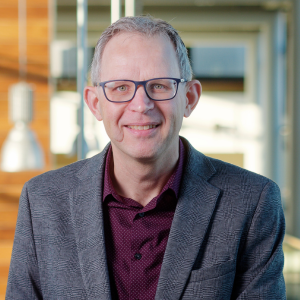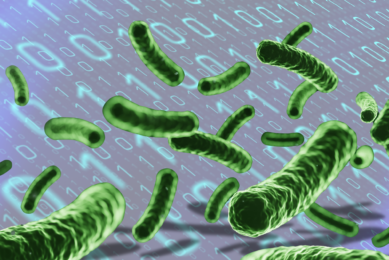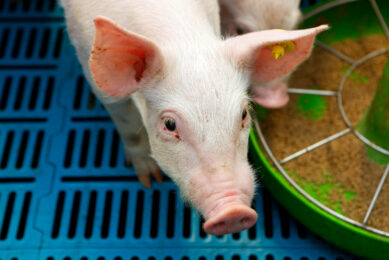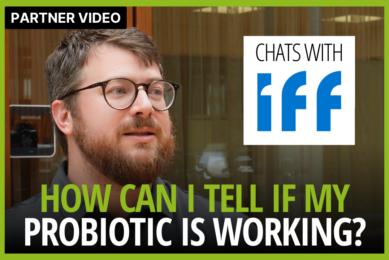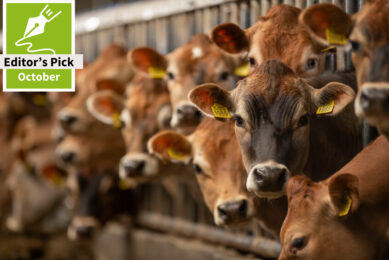Erich Erber leads Biomin from fun to serious business
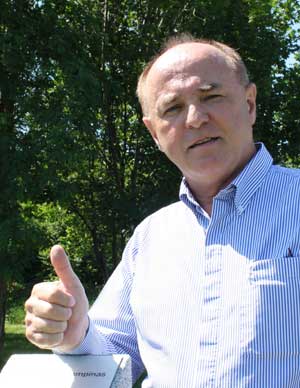
Being an entrepreneur in the feed industry, one needs a unique mix of optimism, curiosity and perseverance. Pioneering in the field of natural feed additives like probiotics and mycotoxin binders, says Erich Erber, founder of Biomin, is like walking a road which is full of trials and errors. None of them, however, could take away the focus of delivering innovative products.
"It was just great fun, to create something new. In the early eighties, the use of antibiotics was the standard – everybody was using them. When I started in the industry, animal performance when supported by AGP was up 10-15%. Ten years later, however, the performance increase was down to 3-4%. The decline of the efficacy was obvious and just to increase the dosing was not a solution for the long term. It was quite clear to me that the antibiotics would not have a sustainable impact in animal nutrition in the future. They belong to the curative use and not to the nutrition. My feeling from this practical experience was: We needed something new.
My friend, the late Dr Herbert Egger was the first, in the early eighties, to produce probiotics, on a very small scale in a plant in the southern part of Austria, in Styria. His product was called Pronifer and consisted of microbials isolated from rumen. I got to know him quite well and we became one of his distributors. He indeed was one of the pioneers in the field of probiotics and lactic-acid bacteria.
However, when selling the probiotic to several feedmillers initially, it just wasn’t a continuous success and we had to try to find out why the product had failed. Looking into it, there was always something new to be learned, the formulation, the right stability or many other things, such as the fact that one cannot combine probiotics with certain antibiotics for example.
Finally when I decided to start my own company, I created a premix product line with the probiotics of Dr Egger in it so I could make sure that the formulation was correct. In 1983, at the age of 31, I started Biomin as a company with three staff. I told myself: I’ll give it one year, and if it doesn’t work within one year, I’ll close down and get a job somewhere else.
Luckily it went well – today we are selling our products worldwide and we are even selling probiotics in Korea, the most competitive probiotic market in the world. Koreans believe strongly in the probiotics concept because of their daily dish kimchi – cabbage fermented with lactic bacteria. Koreans can eat kimchi for breakfast, lunch, dinner or even at night. If you can sell probiotics in Korea, you can do it everywhere.
History
I am a farmer’s son; my family were animal traders, particularly pigs. I had to help on the trade from a very early age. I studied agricultural engineering – also doing an internship in Canada, where I got to know large scale farming for the first time. After that I went to Ghana for two years, doing work in a construction material company – completely out of range of agriculture. But I learnt a lot. I learnt how to go on in a developing country where nothing works but you still have to work your way somehow. Back in Austria I started up my own company, I came up with the idea to call it after ‘biological minerals’ – bio-min. Afterwards it became clearer to me that I wanted to make a product line that is purely probiotic.In 1985, we bought Interpremix, a small premix factory which became our first production facility. The founder, Dr Halama, had been one of the first to think about a product that can adsorb or deactivate mycotoxins – and had a toxin adsorbing product developed which was branded as Antitox Plus. At first, looking at the formula, I couldn’t think that this product was of any purpose. Even theses from the Veterinary University in Vienna concluded: This product does not work. Dr Halama, who stayed on as a consultant, had however been able to convince a Taiwanese business man to become a distributor of this product. We shipped a container and I thought they would never order again. But suddenly, we got another order from Taiwan. It made me think: Why are the Taiwanese using a product that should not be effective?
I went to Prof Leibetseder at the Veterinary University Vienna and asked if they could do some in vitro studies with the product. Finally, after we saw the results I was stunned. For deoxynivalenol (DON) and ZON, common in Europe, the adsorption was close to zero. But with aflatoxins, which are abundant in Taiwan, the efficacy was 98%. And that is why the customers in Asia got good results since they had primarily to deal with aflatoxins and less with Fusarium toxins.
Deactivation
At that time, when farmers in Europe where faced with corn silage contaminated with DON, the recommendation was: Feed it to the bull, as he can cope with it, there was never any growth retardation. I wondered: Why can a bull deal with it? There must be some kind of mechanism in the rumen that can either decompose or make use of this molecule. So when we started our own research team in Tulln, Austria we designed an artificial rumen model to find out what detoxification mechanism takes place in the rumen fluid. After half a year of conditioning the rumen fluid with toxins and more than one year of isolation experiments, we identified a microbe that was able to detoxify DON and other members of the trichothecene family; the result was BBSH, a Eubacterium strain ‘new to the world’, found in 1997.It is very difficult to ferment as it is a very strange and unusual bacterial strain, but in the end this was the first breakthrough in fermentation technology in our company.
The registration of any product for mycotoxins deactivation in the EU proved very difficult since there was no classification in the EU for this kind of feed material until recently. The European Food Safety Authority (EFSA) had more or less the view of: Everything above the maximum mycotoxin regulation level must not be used as a feed additive. So in Europe, as nobody is allowed to blend or dilute the contaminated feed – we simply had to burn it.
Now, finally, there is a category where the products for mycotoxin deactivation can be listed: As a product with a claim to both deactivate mycotoxins and to bind mycotoxins. We expect first ruling on the EU feed registration law by the end of this year or early next year. Now that is the real breakthrough.
Probiotics
Probiotics of natural growth promoters in general have often a bad image. Often I hear: If they are so good, why didn’t they cover the market yet? I think the answer is very simple. Antibiotic growth promoters have been in existence for 40-50 years and had a large R&D behind them. Besides most AGPs have been developed for veterinary or human use and the pharma industry had its product applications expanded into the feed industry. There was reasonable amount of research and it was paid by somebody else other than the feed industry.If we develop a probiotic now like PoultryStar or AquaStar solely for the feed industry, we have to pay not only for R&D costs to develop such products, but also have to go through all the registration and other regulatory hurdles for just one possible market – the feed industry. Taking the probiotics as an example we are still in the really early stages. Only now, with the ban of AGPs ongoing in Europe, Korea and Taiwan – and China thinking about it – the industry will begin to invest millions in new NGP product lines. Once when we get big spending in new product lines, we can enhance better product formulations.
Mycotoxins are perhaps the best example. We started 25 years ago with a very simple binder. After 25 years, now we have enzymes.
The Erber Group and Biomin |


